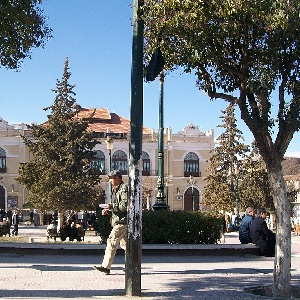Identification and analysis of spatial access disparities related to primary healthcare in Batna City, Algeria

Accepted: 27 November 2023
HTML: 31
All claims expressed in this article are solely those of the authors and do not necessarily represent those of their affiliated organizations, or those of the publisher, the editors and the reviewers. Any product that may be evaluated in this article or claim that may be made by its manufacturer is not guaranteed or endorsed by the publisher.
Authors
The issue of reducing spatial disparities is one of the most pressing concerns for policymakers and planners, which consider a crucial focus in planning and public service, especially accessibility to healthcare. Accessibility and proximity are the principal keys to providing good public service. Therefore, a healthcare system that meets the requirements of availability and affordability will be useless if spatial accessibility is not provided equally to all demands (population). Many technics and methods exist to quantify accessibility, including the two-step floating catchment area (2SFCA) method, its widely used to measure healthcare accessibility based on the travel distance threshold. This research paper aims to use the 2SFCA method to measure the spatial healthcare accessibility in Batna City because the 2SFCA method offers to measure accessibility on both spatial and functional levels. The spatial level will consider the threshold distances between the health demand (population) and the health provider location (healthcare facilities); moreover, functional accessibility is measured based on facility to population ratio that will give a better overview of Batna's healthcare provider.
As a result, the optimal threshold distance that offers balanced results between the spatial accessibility score and other WHO ratios will be a distance between 1000- and 1500-meters travel distance. In addition, the central census districts have a higher access score than the rest of the city's districts; most census districts that do not have accessibility (12% of the population) to healthcare facilities are concentrated in the southwest of Batna city.
How to Cite

This work is licensed under a Creative Commons Attribution-NonCommercial 4.0 International License.
PAGEPress has chosen to apply the Creative Commons Attribution NonCommercial 4.0 International License (CC BY-NC 4.0) to all manuscripts to be published.

 https://doi.org/10.4081/gh.2023.1238
https://doi.org/10.4081/gh.2023.1238




